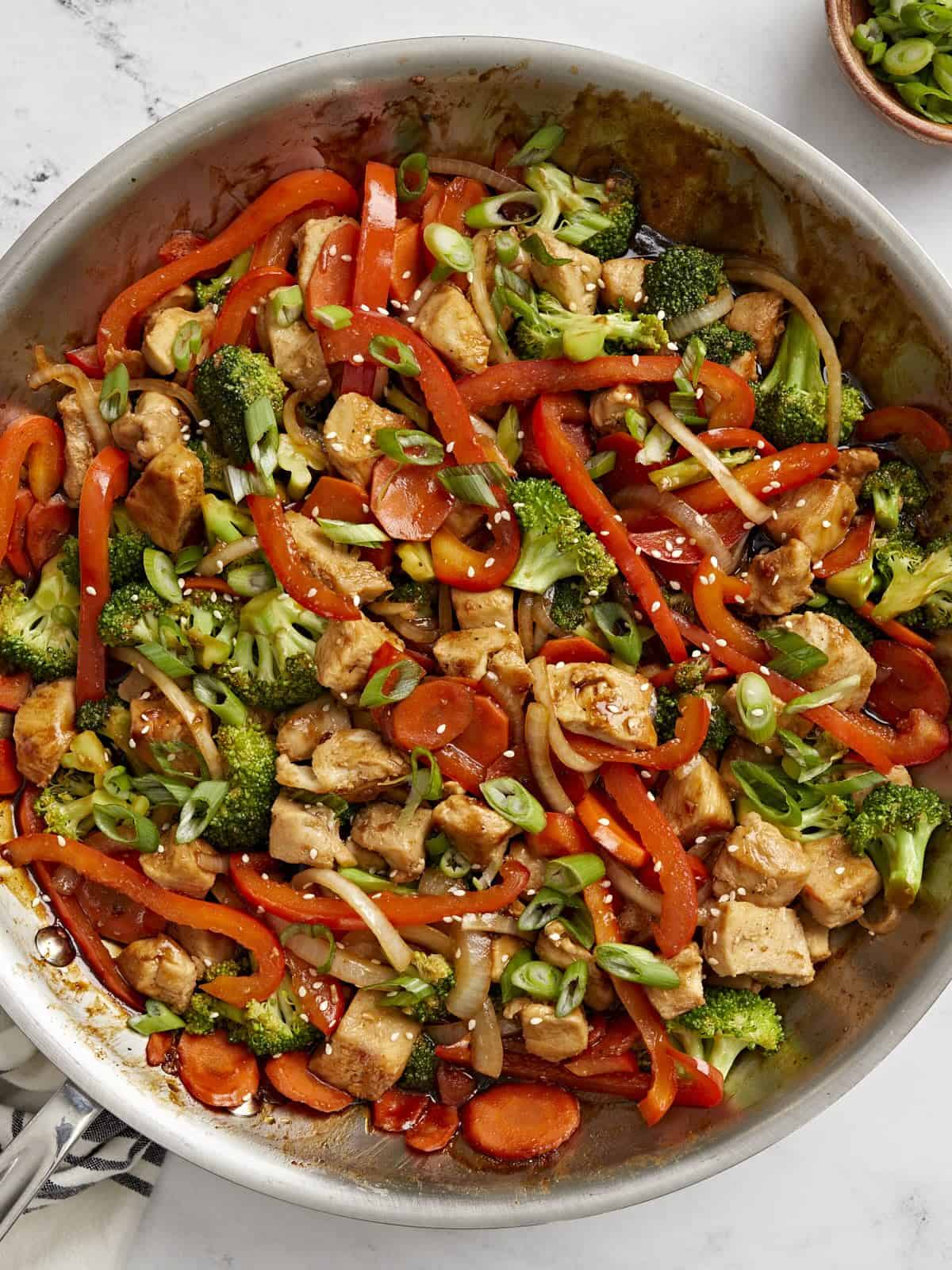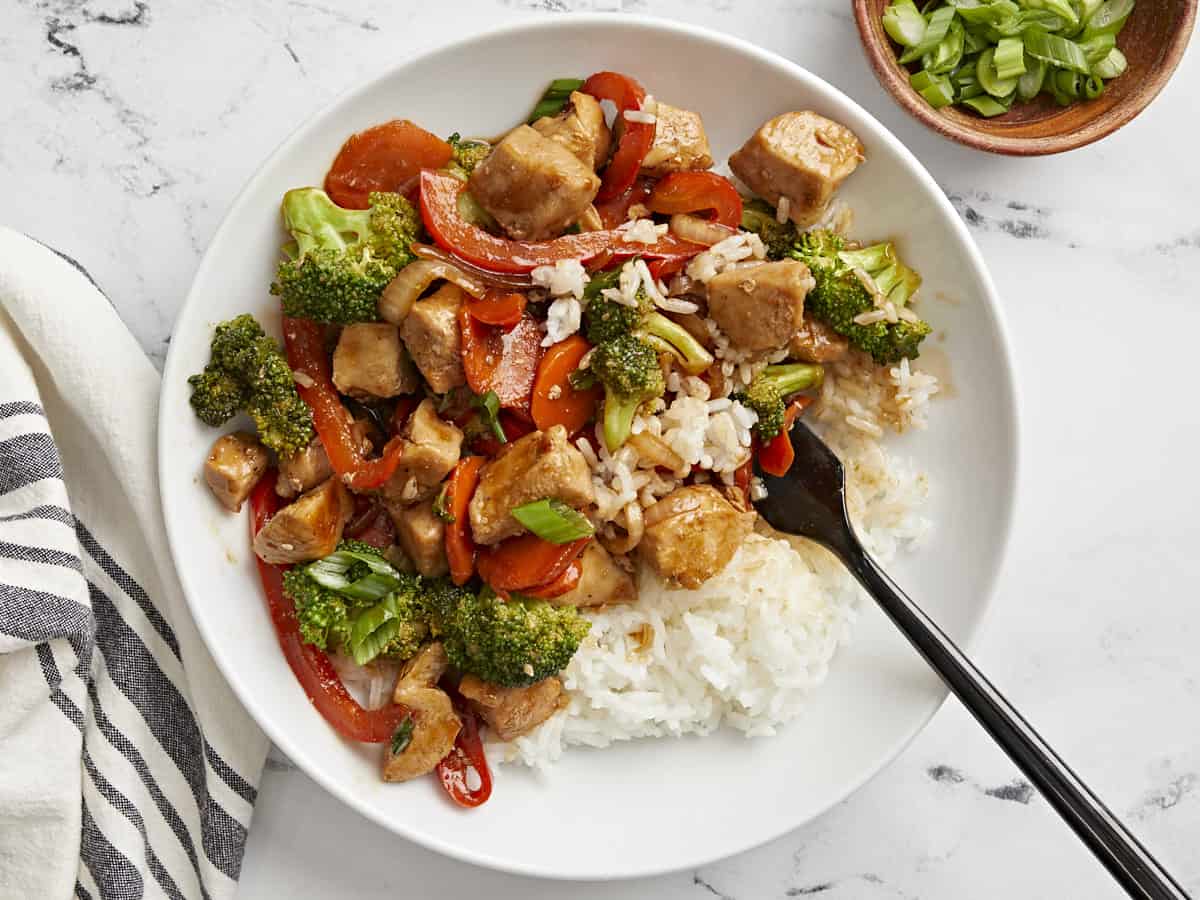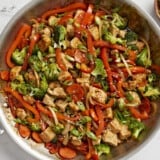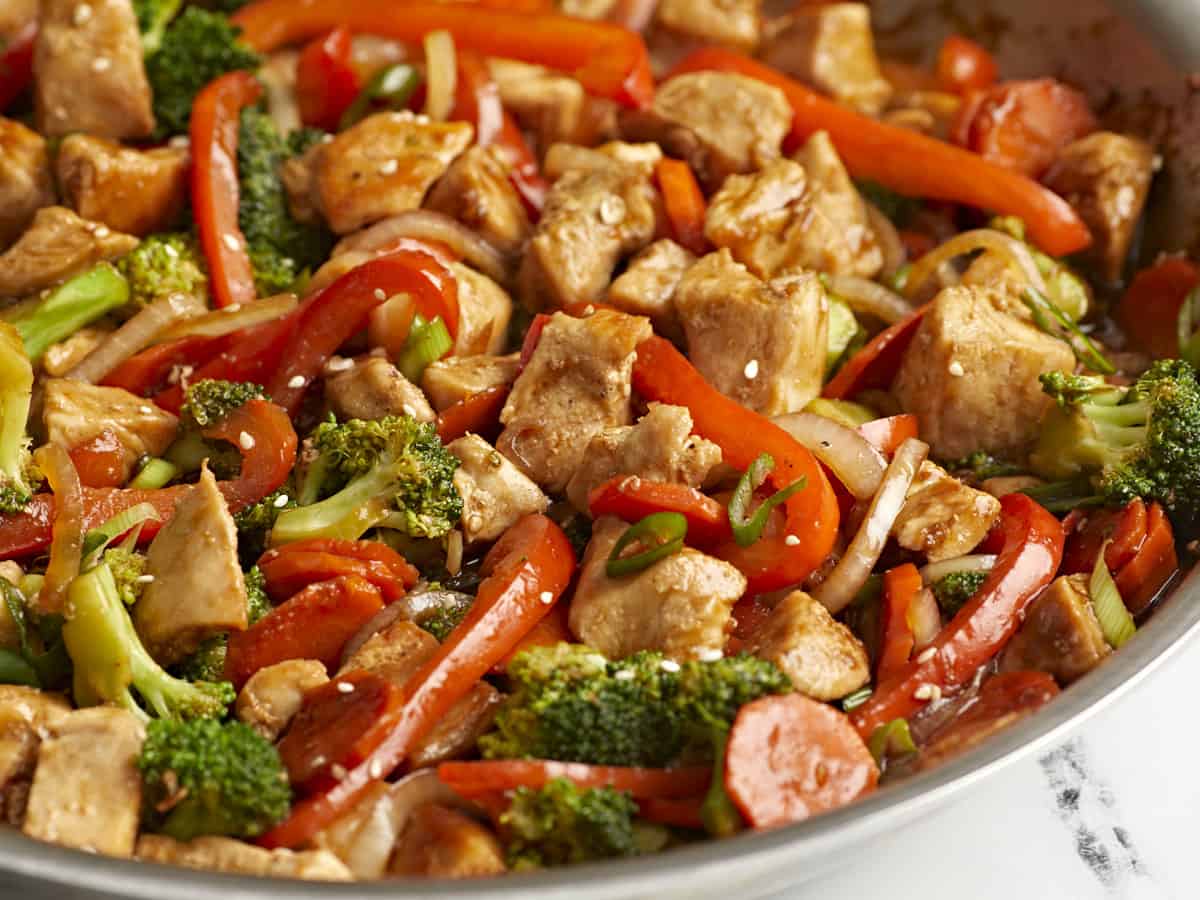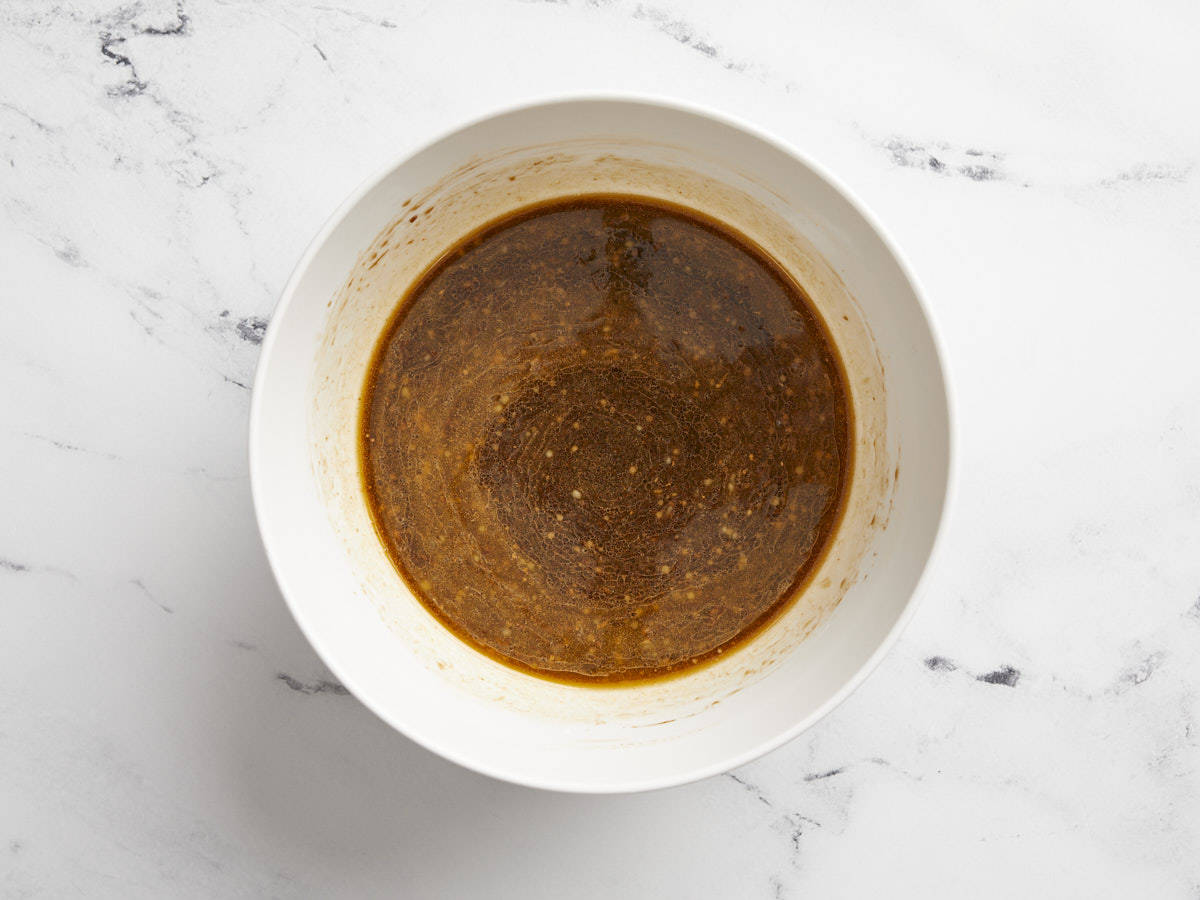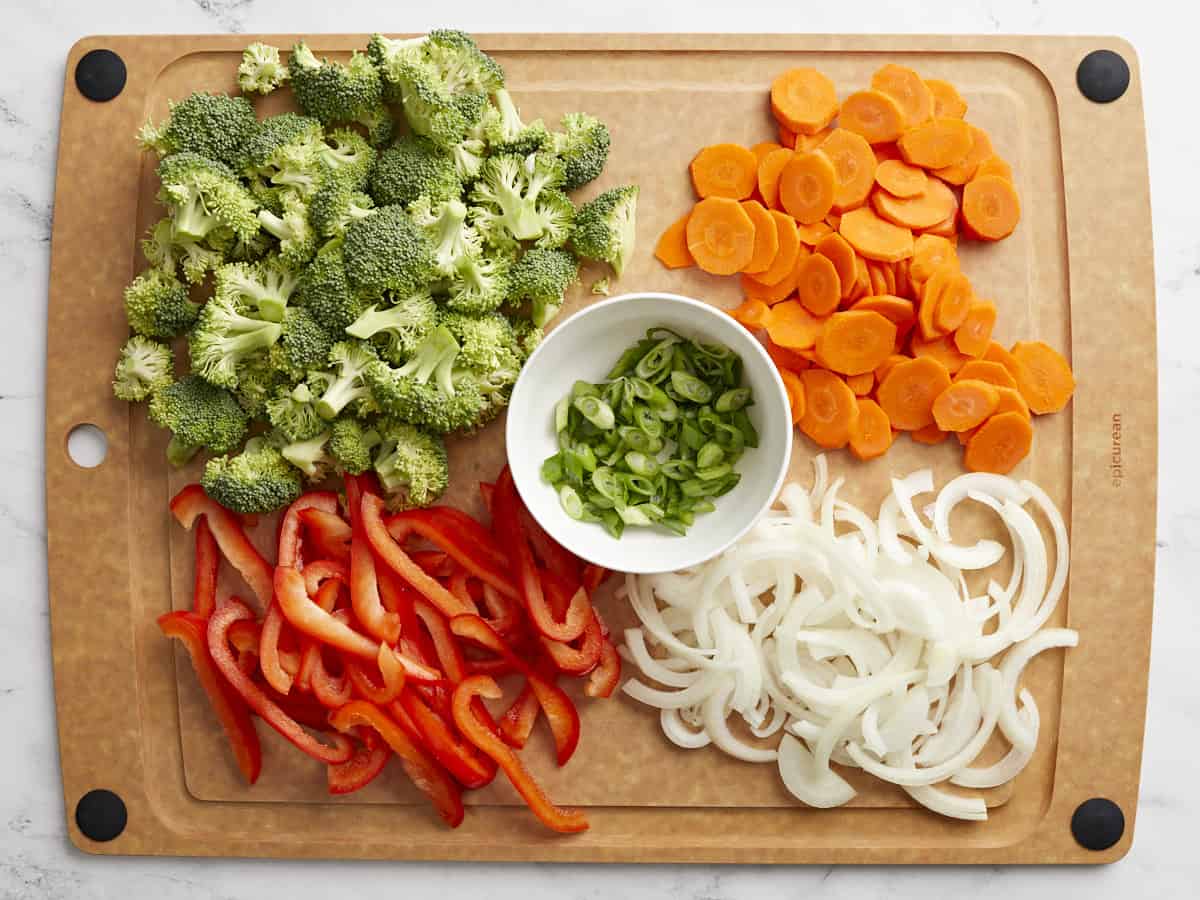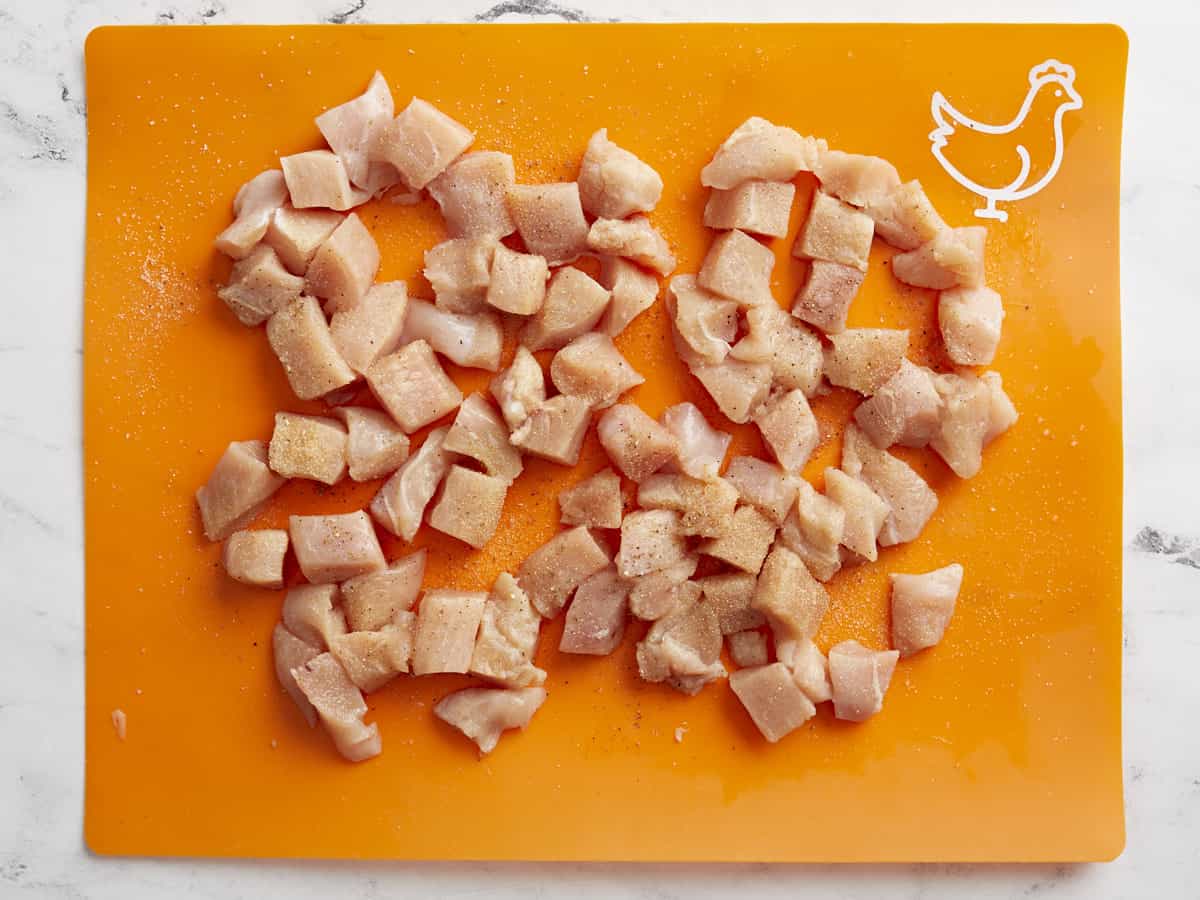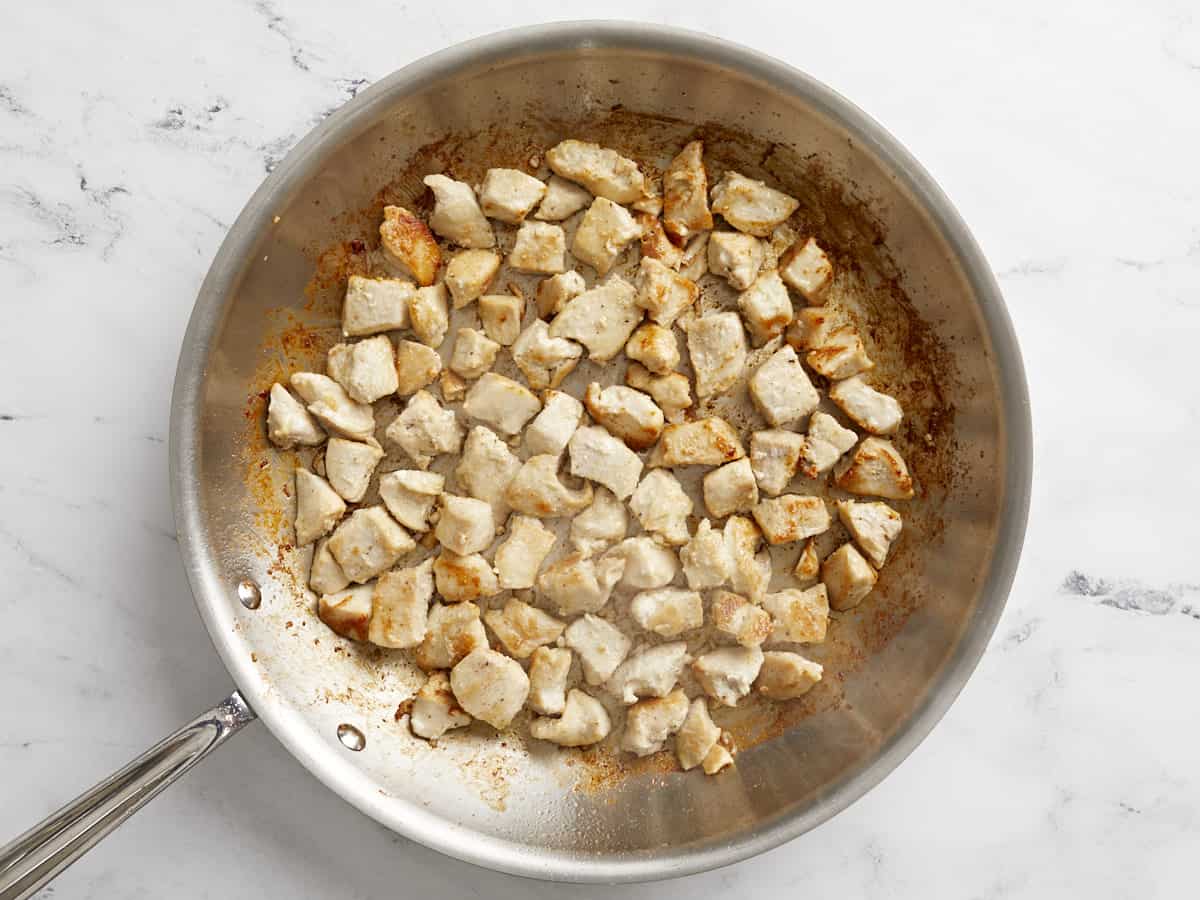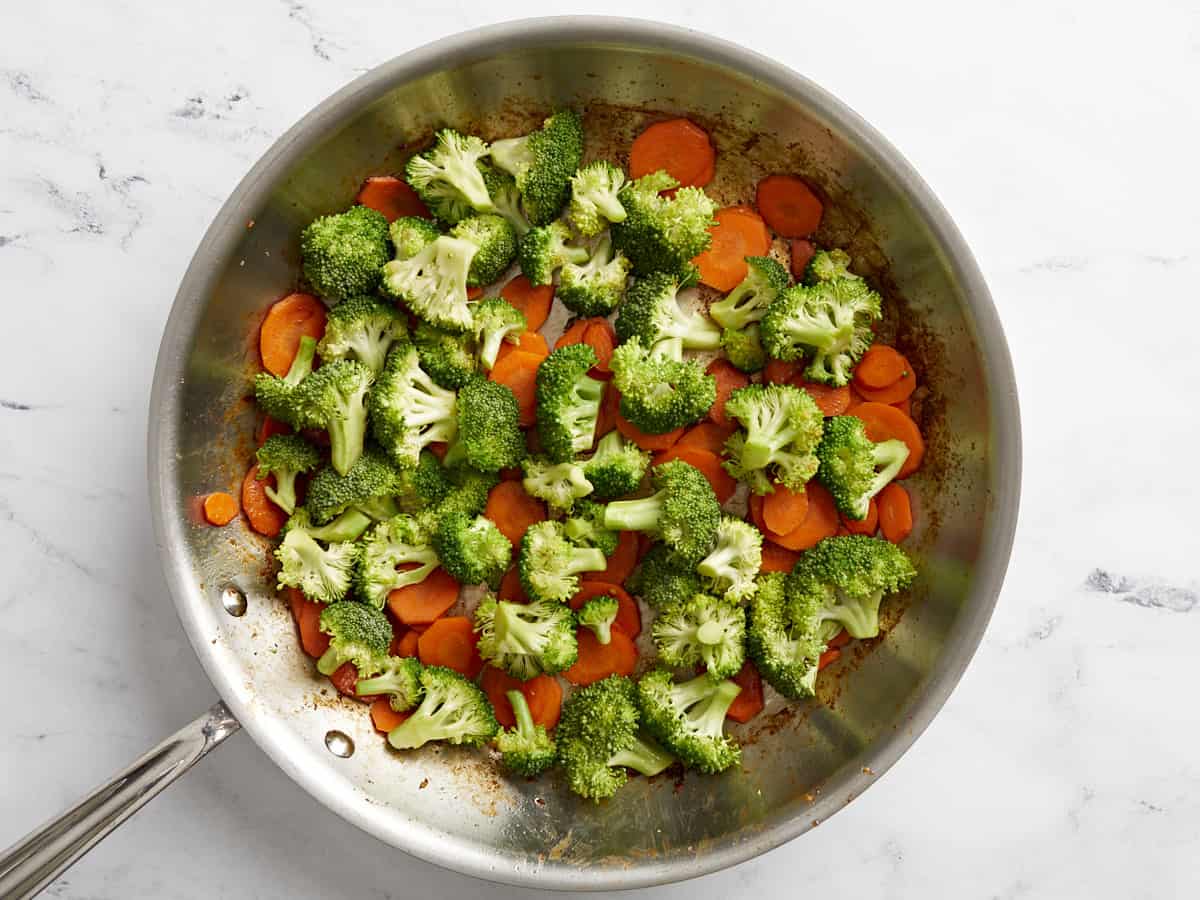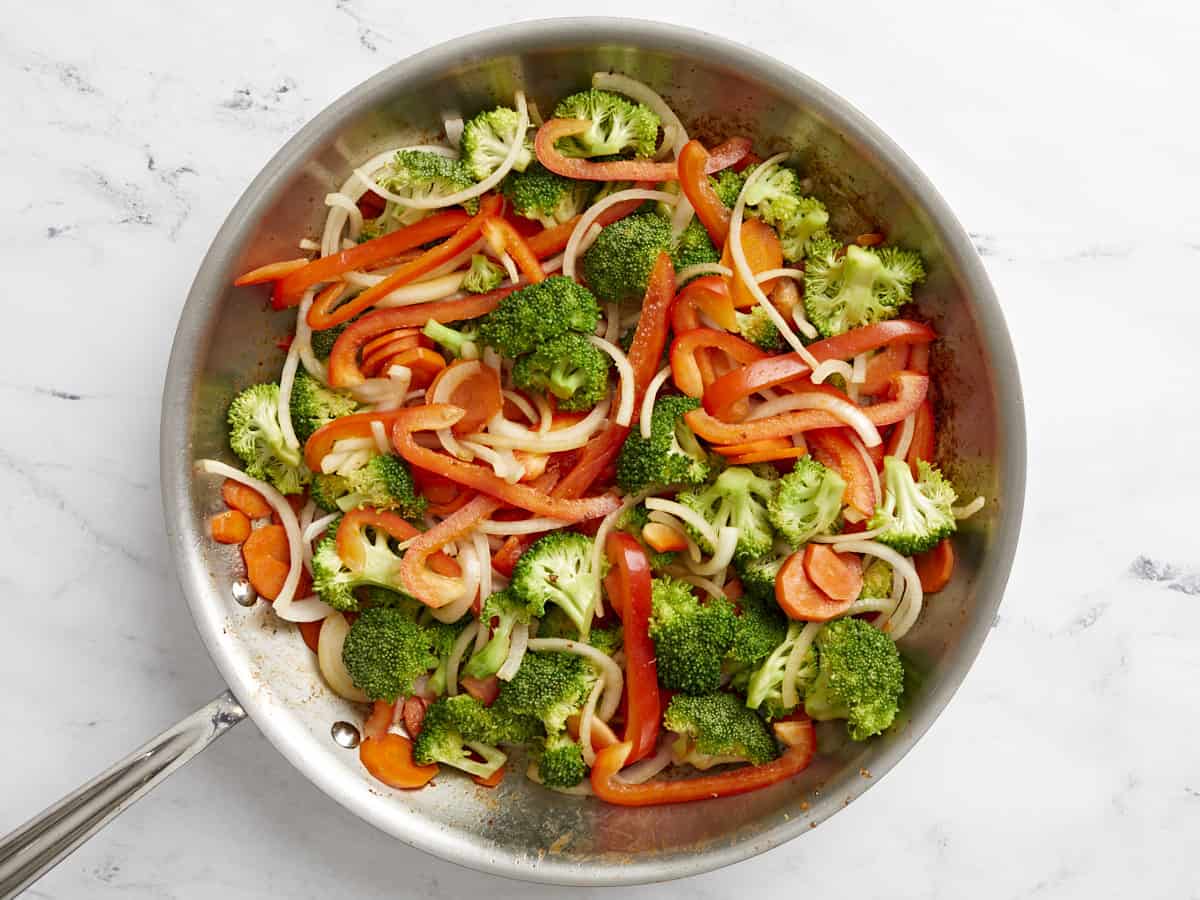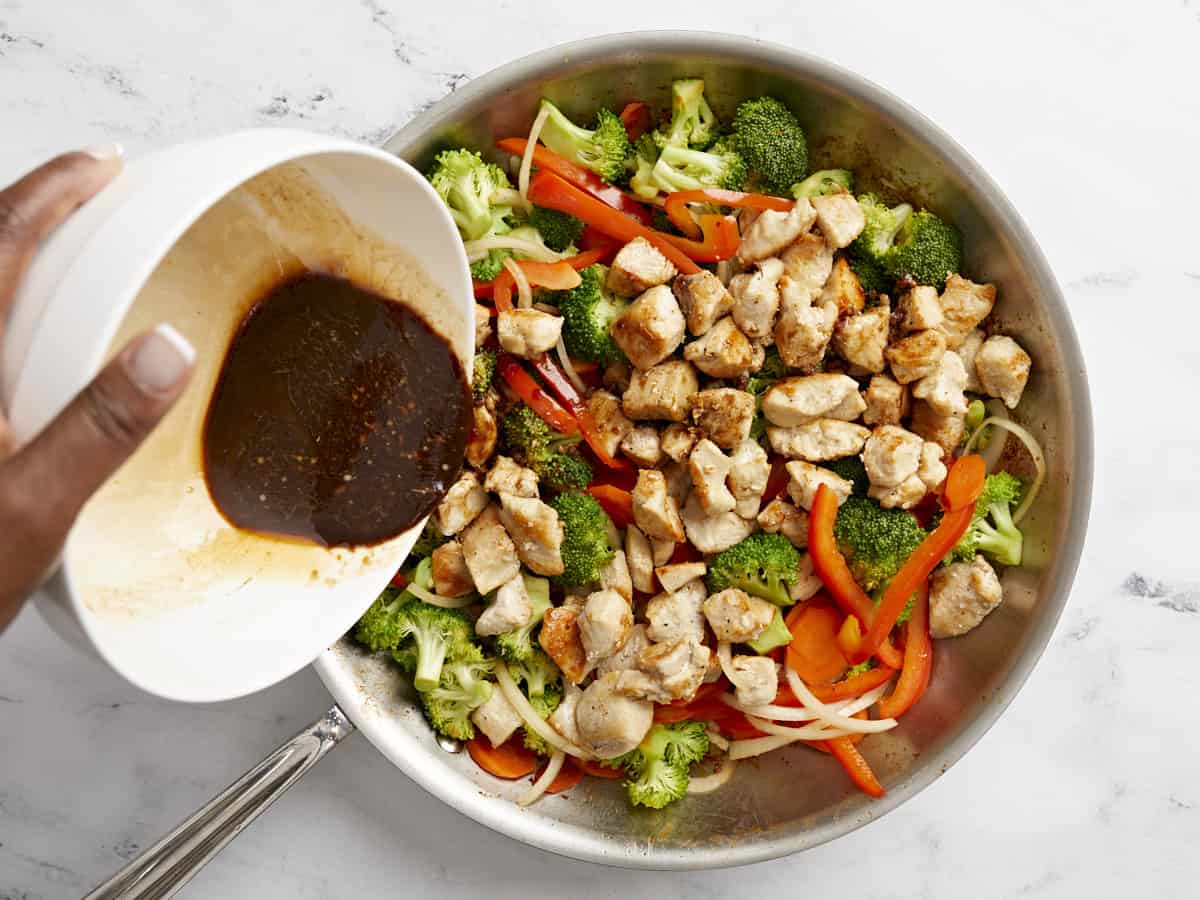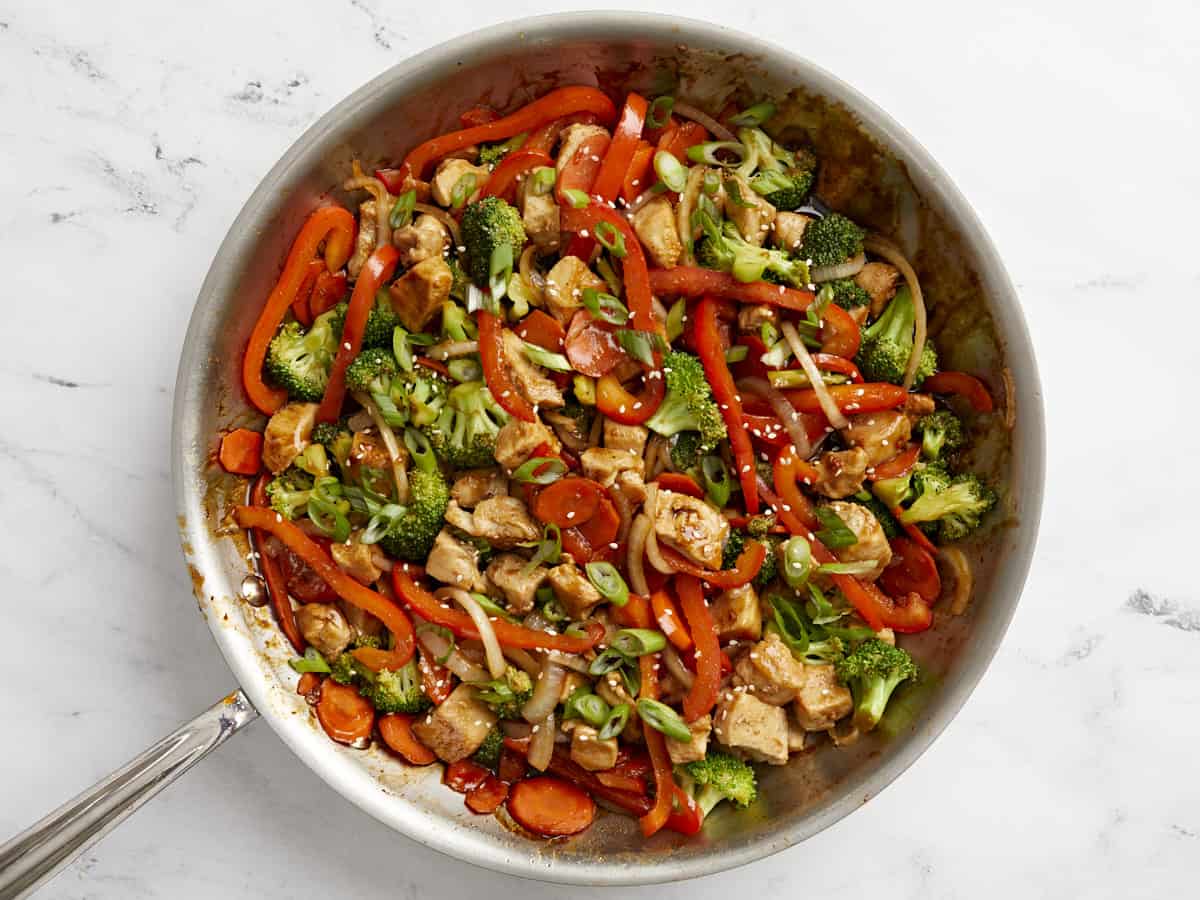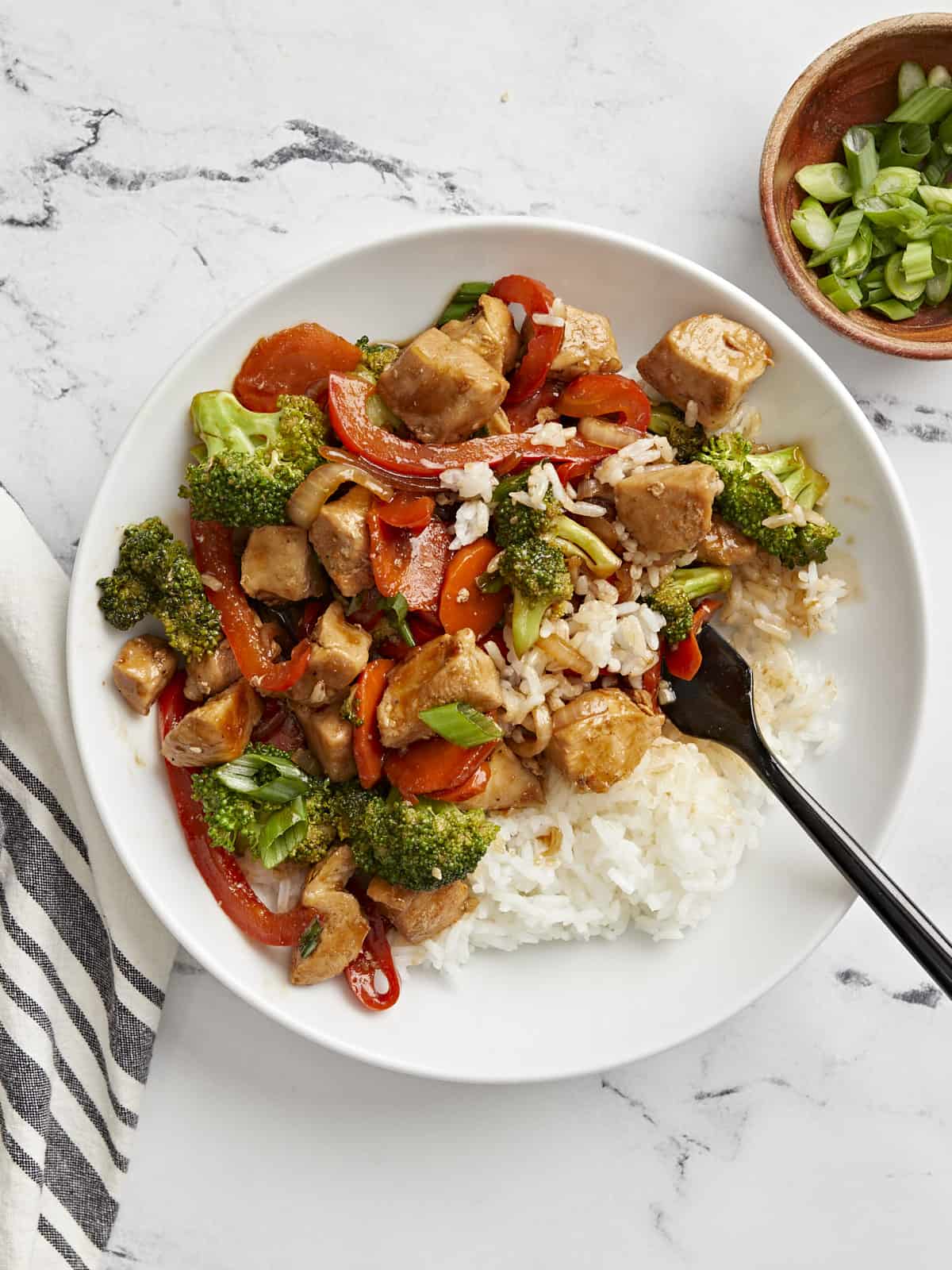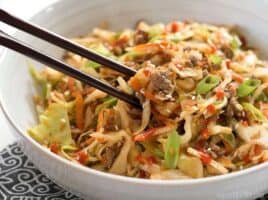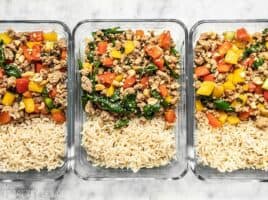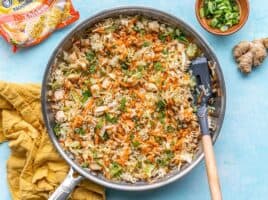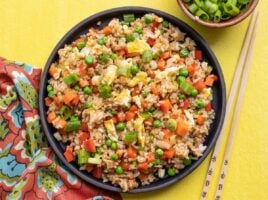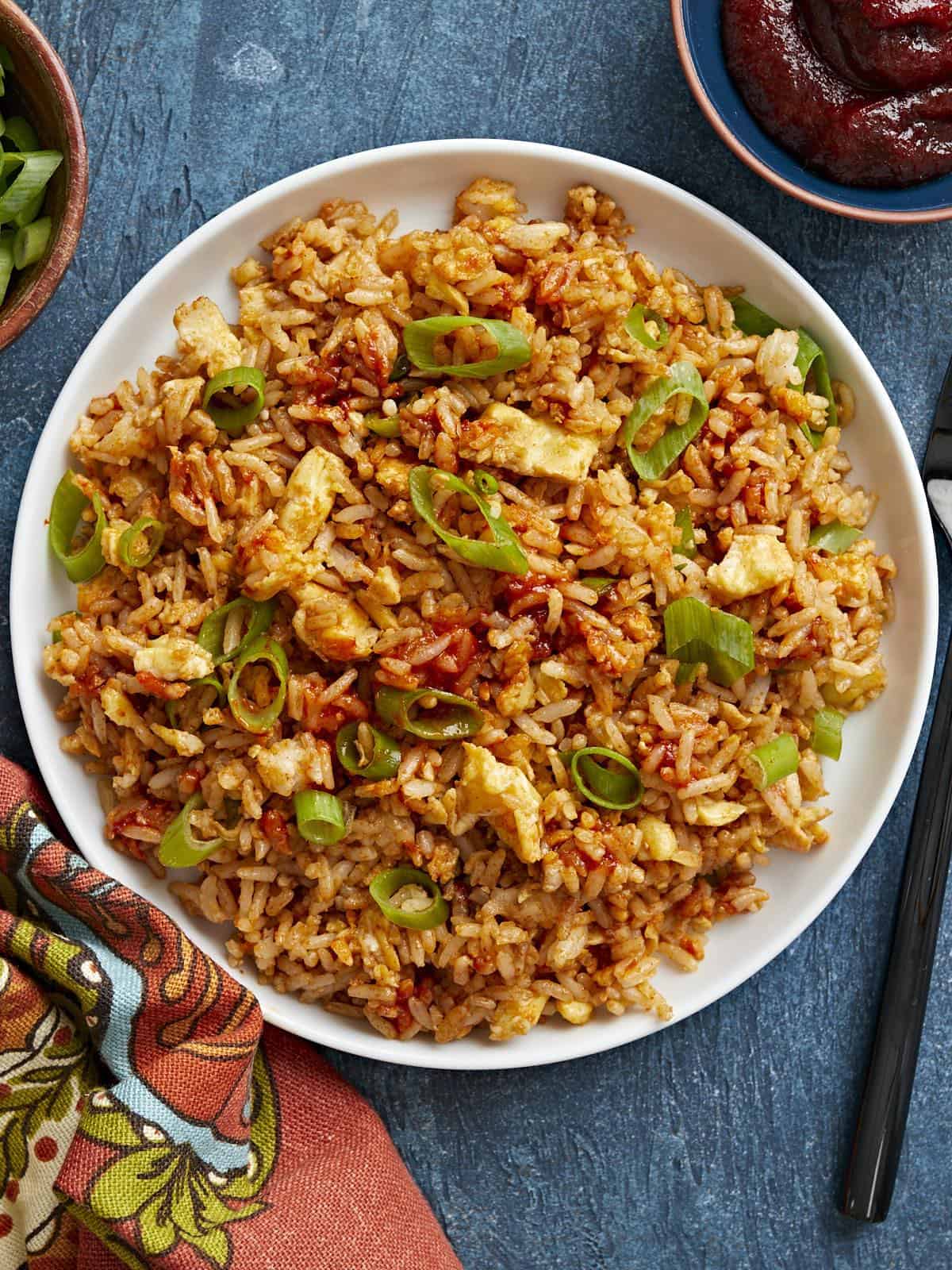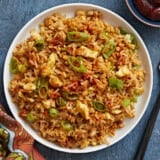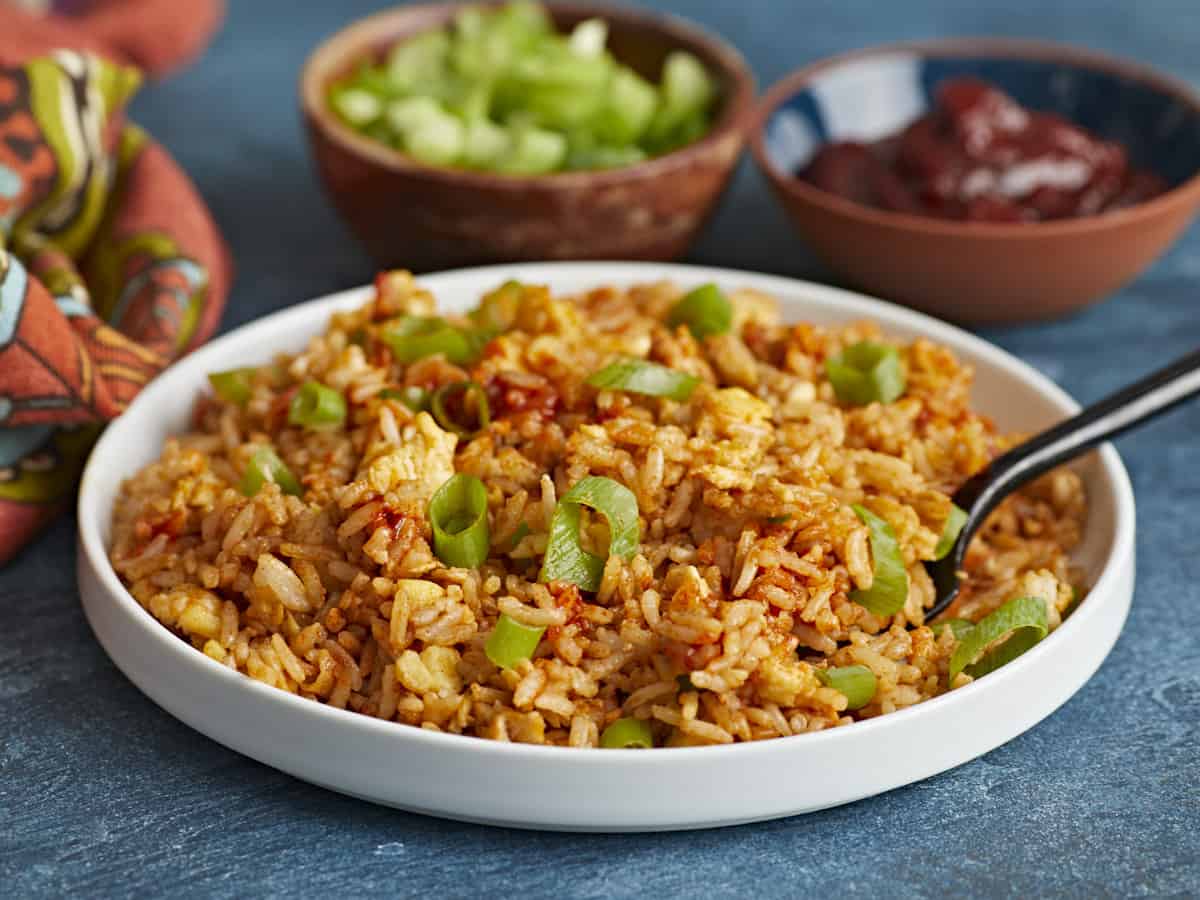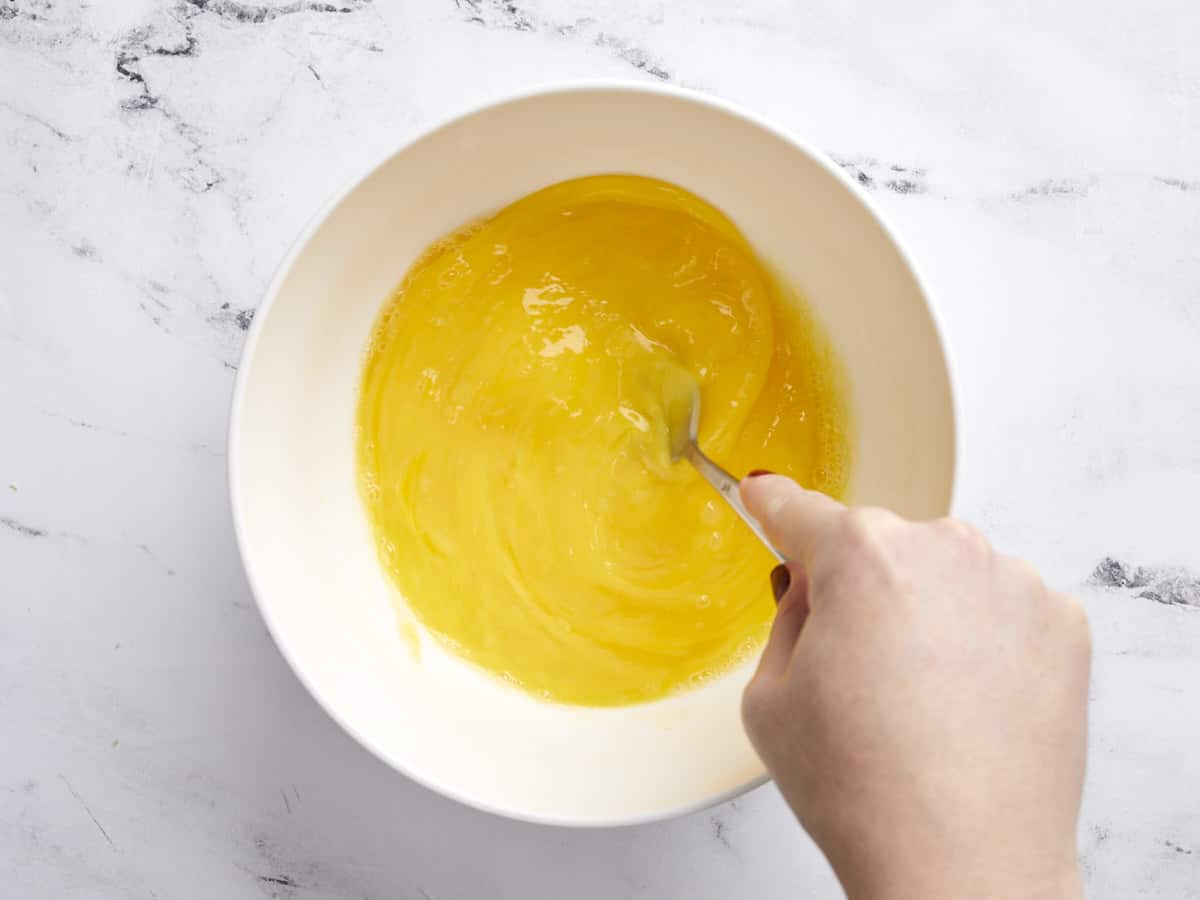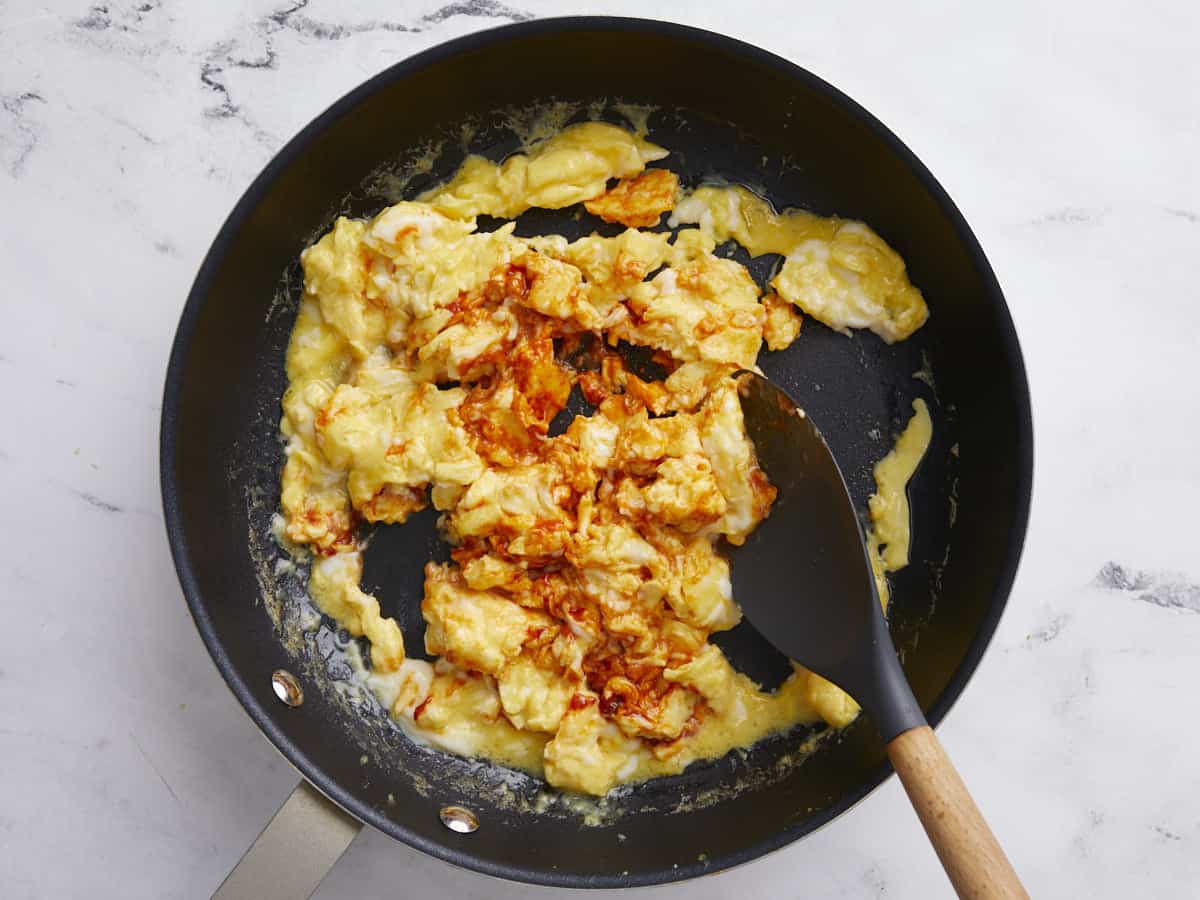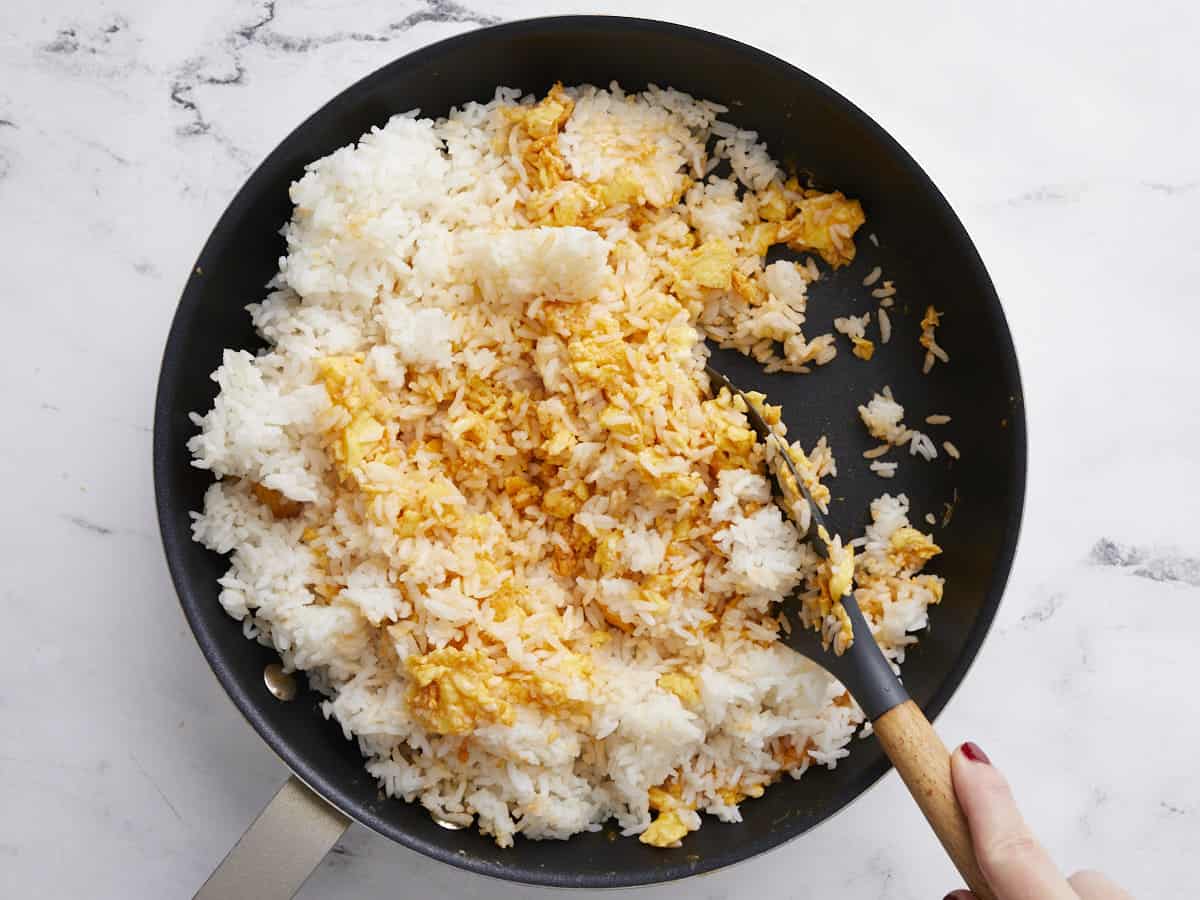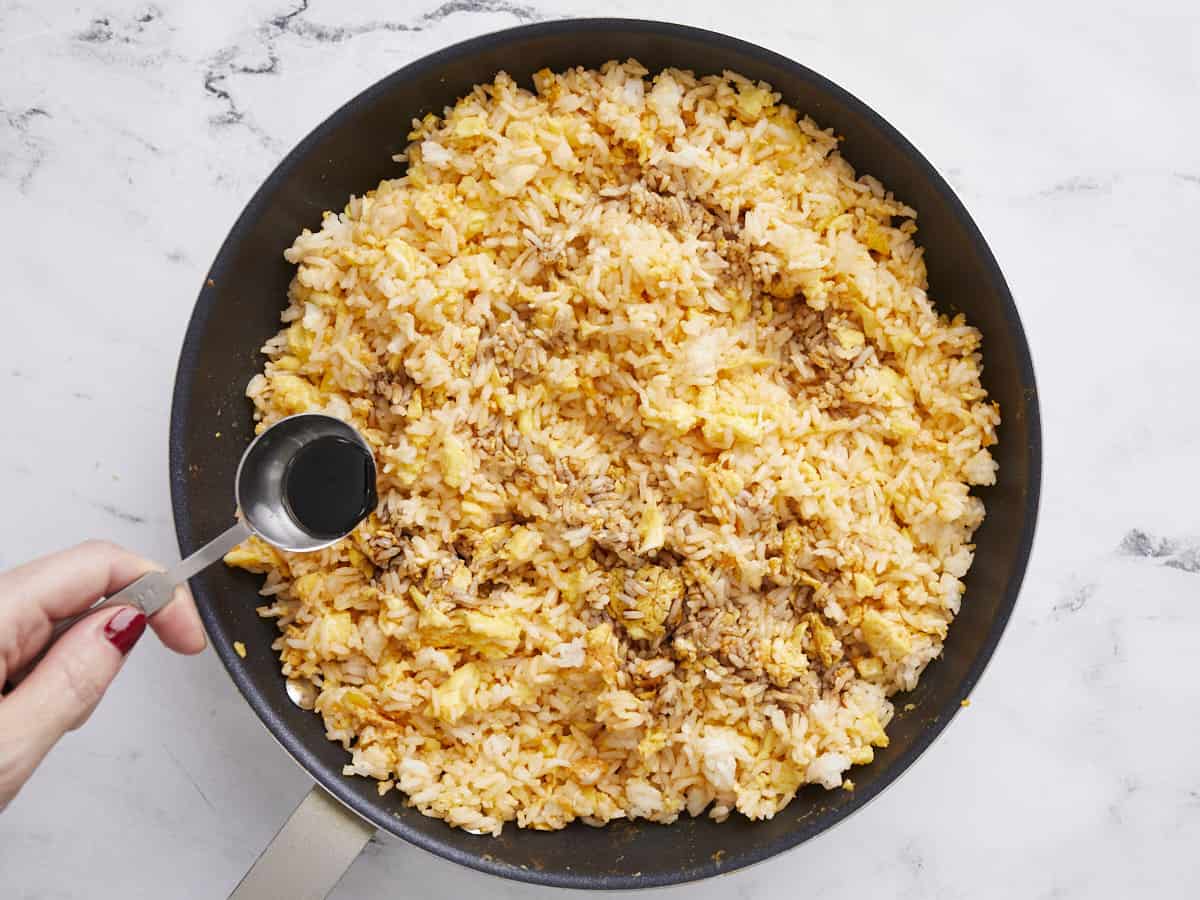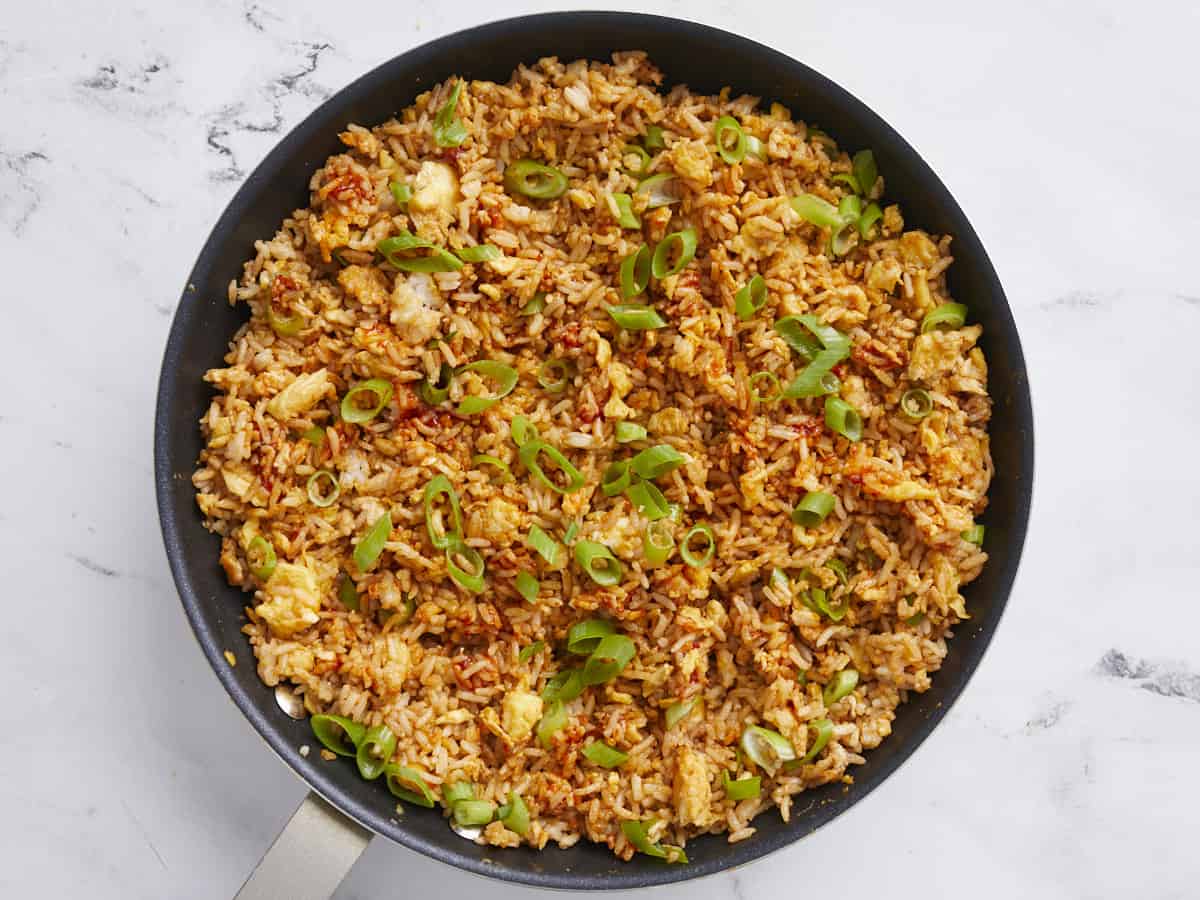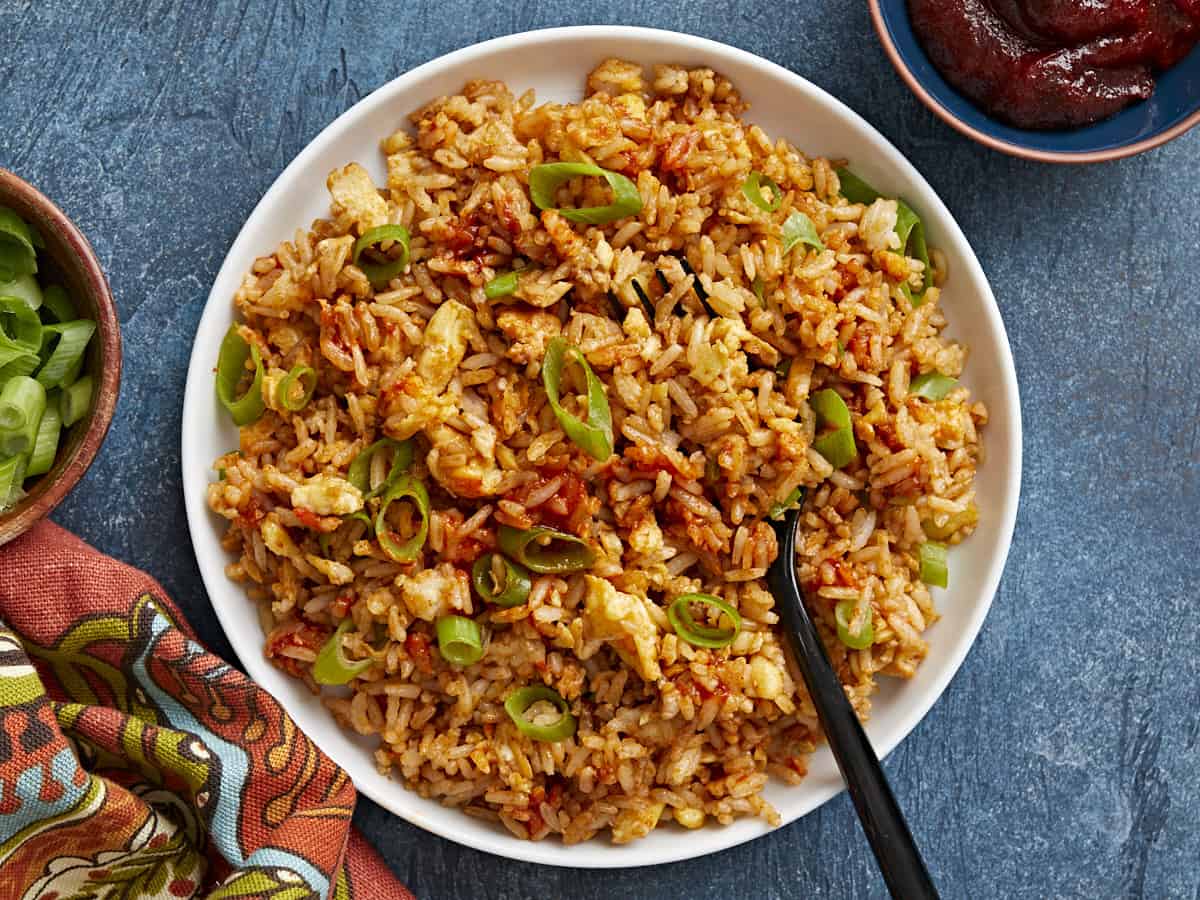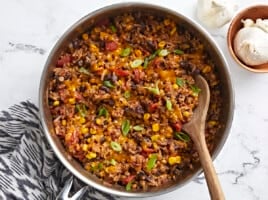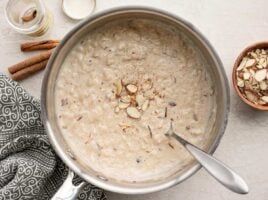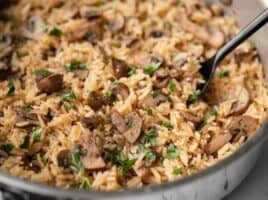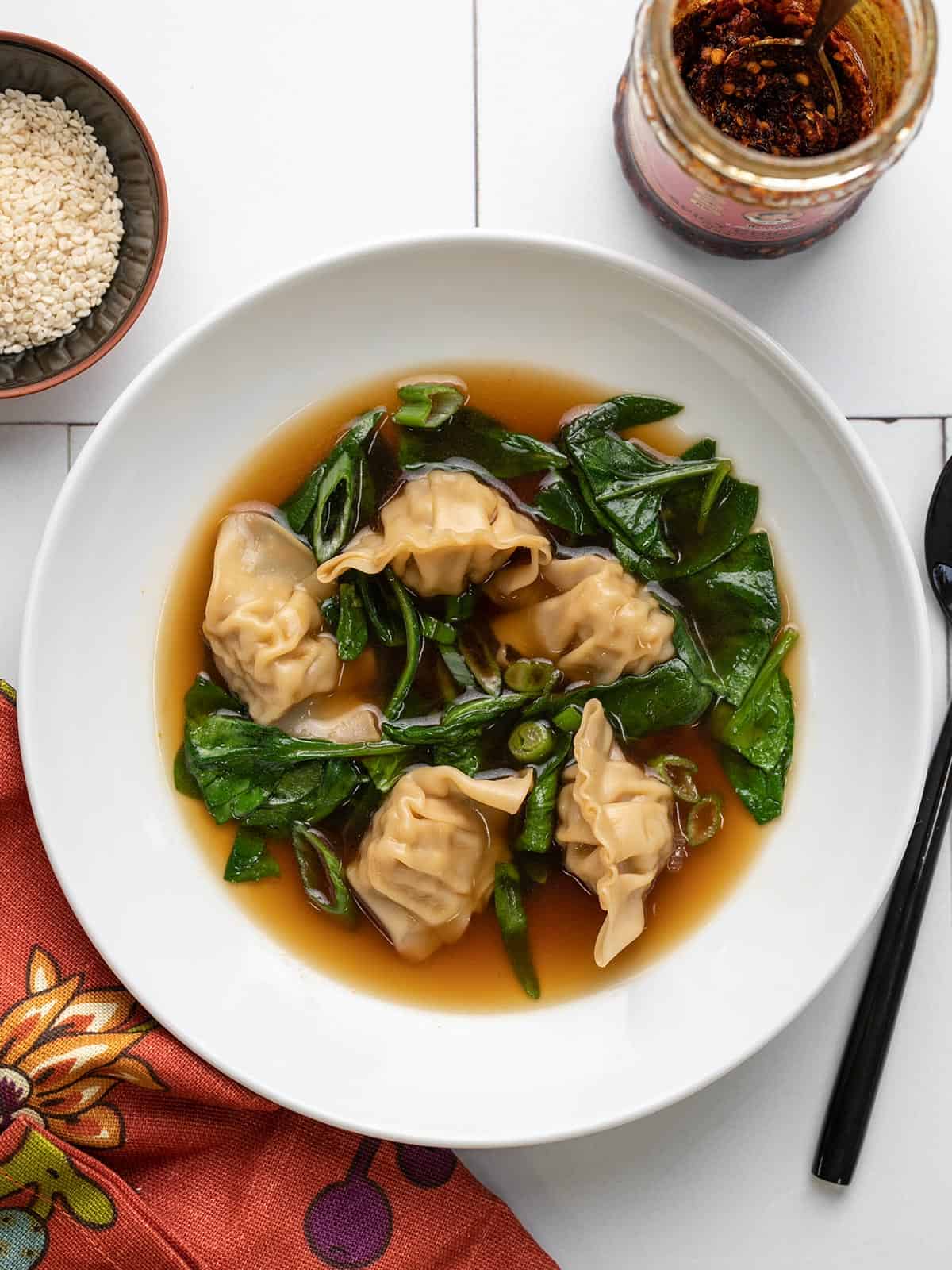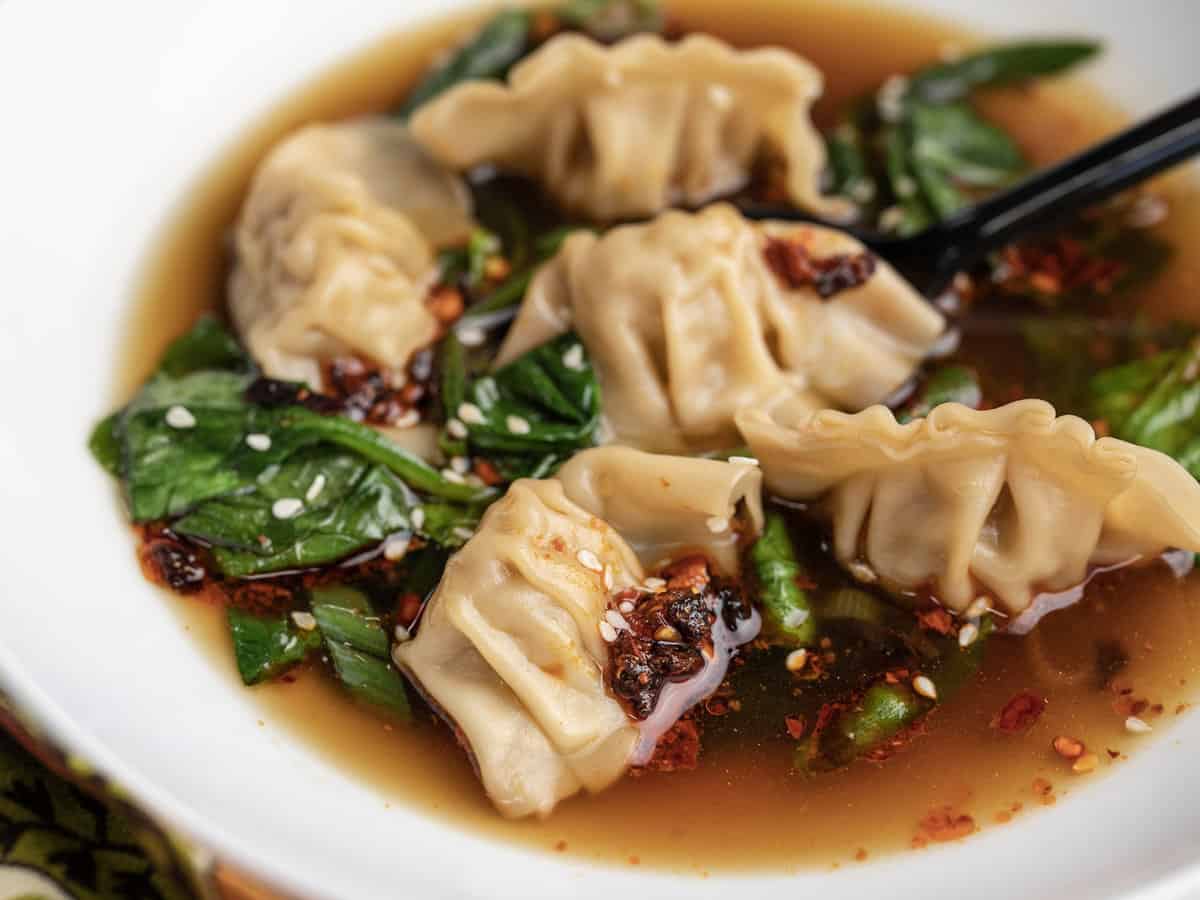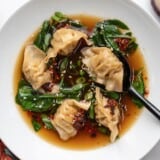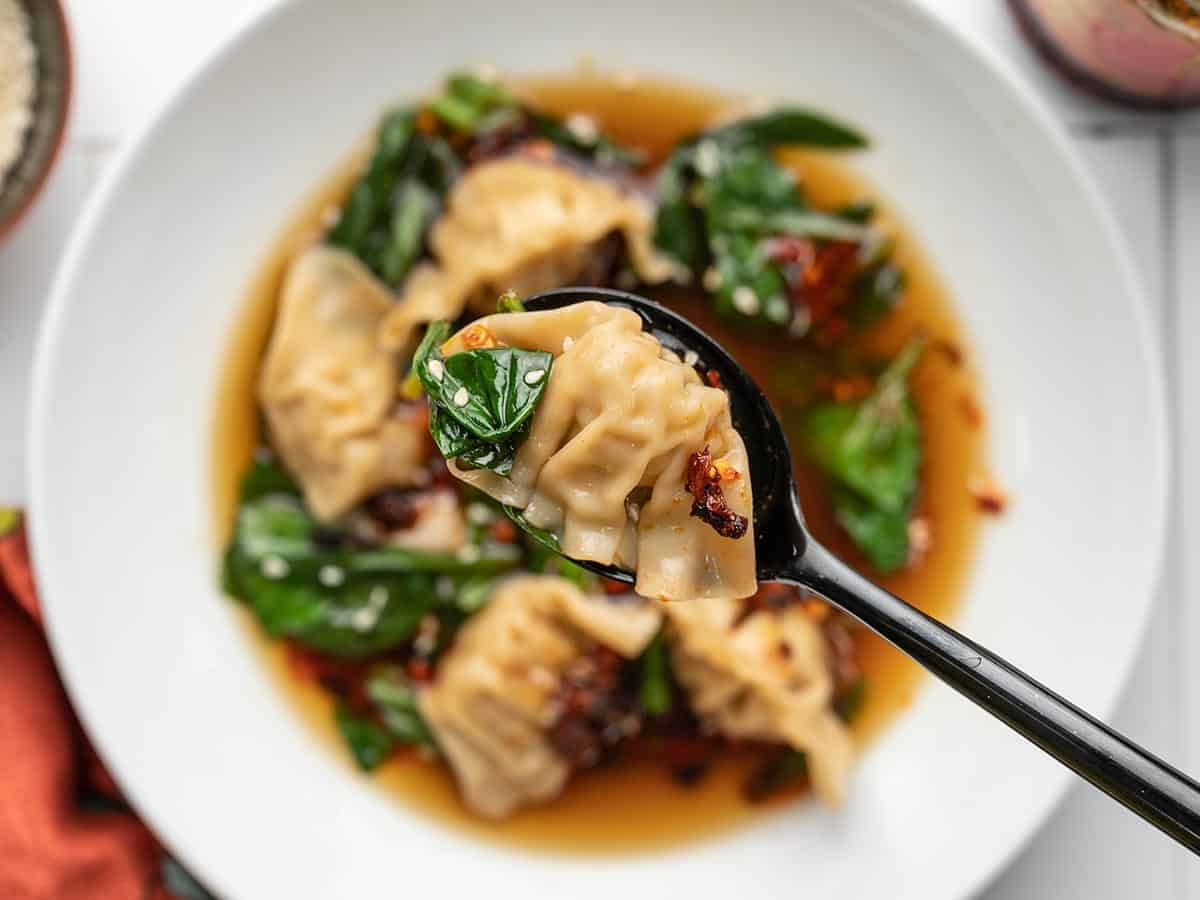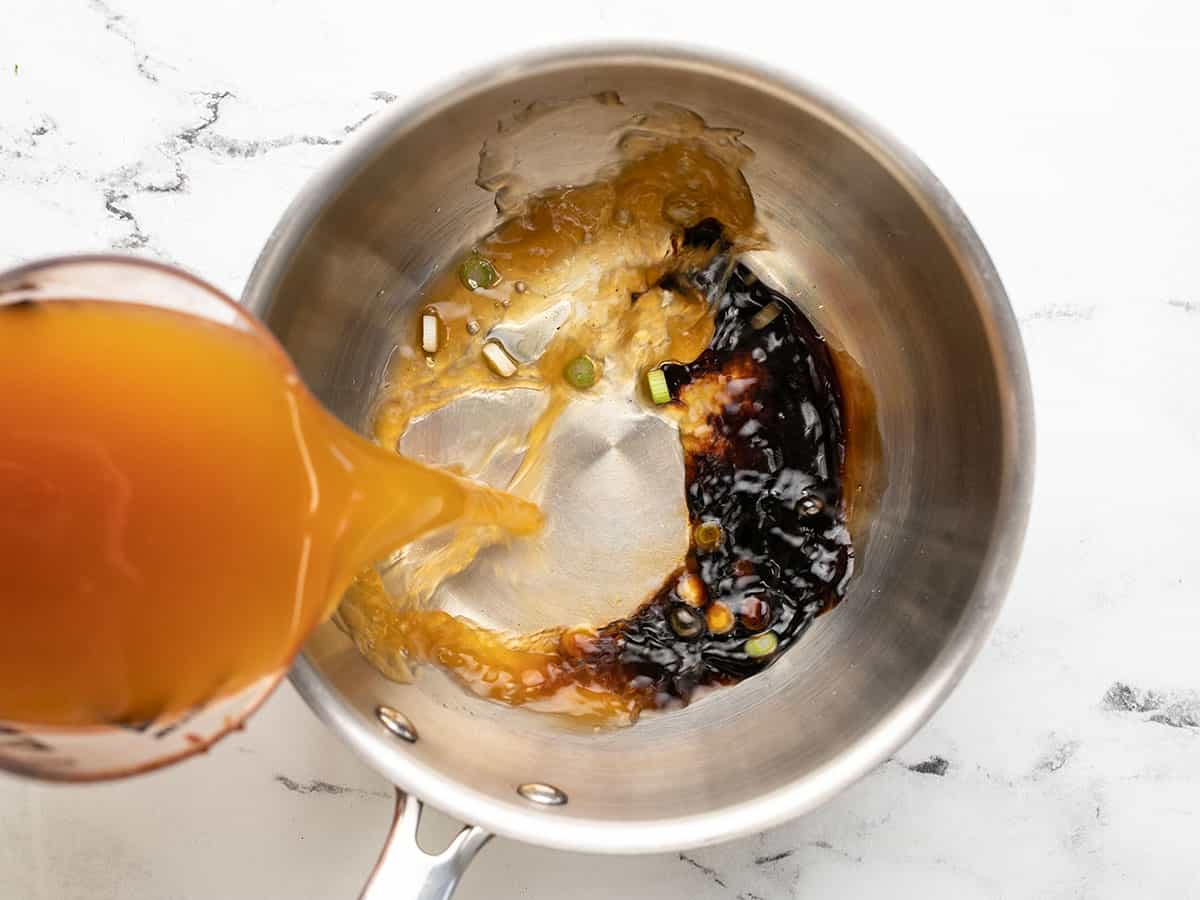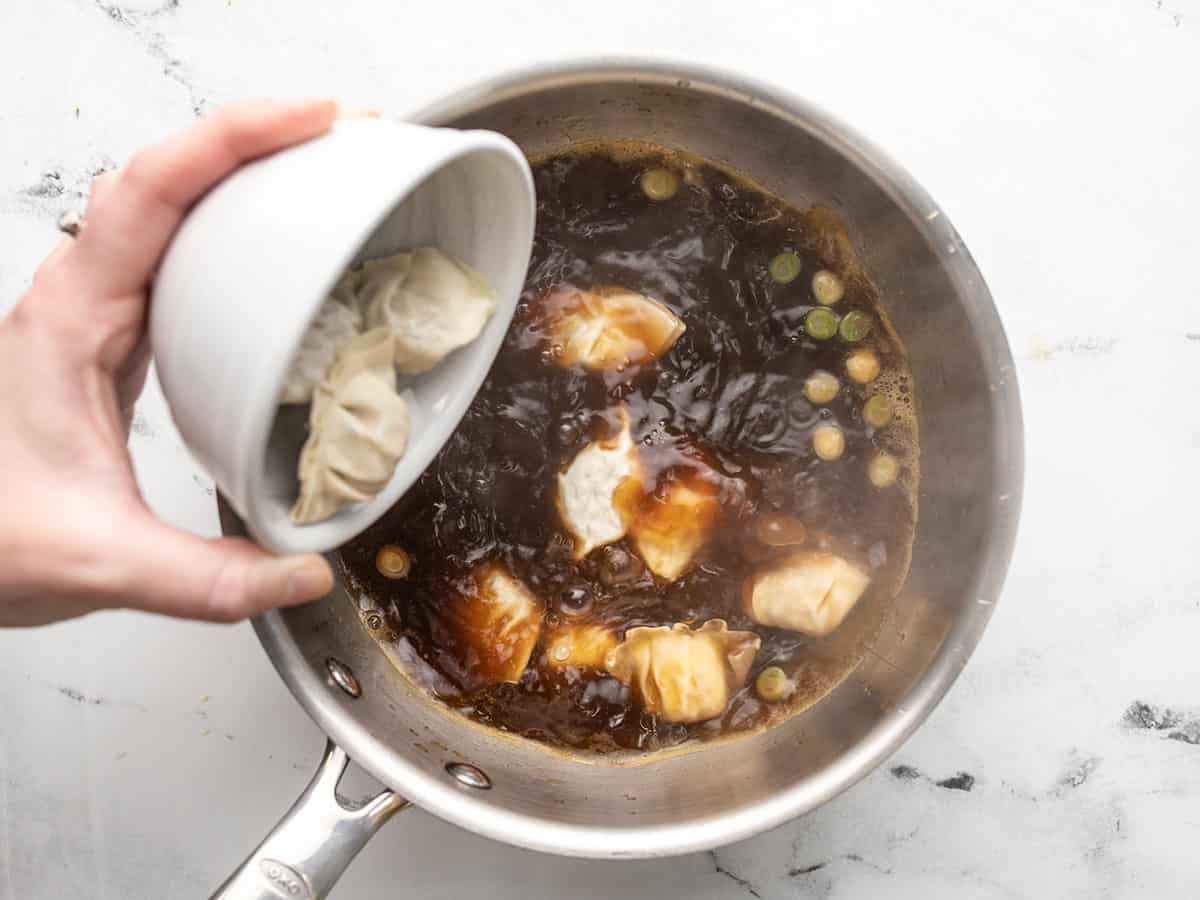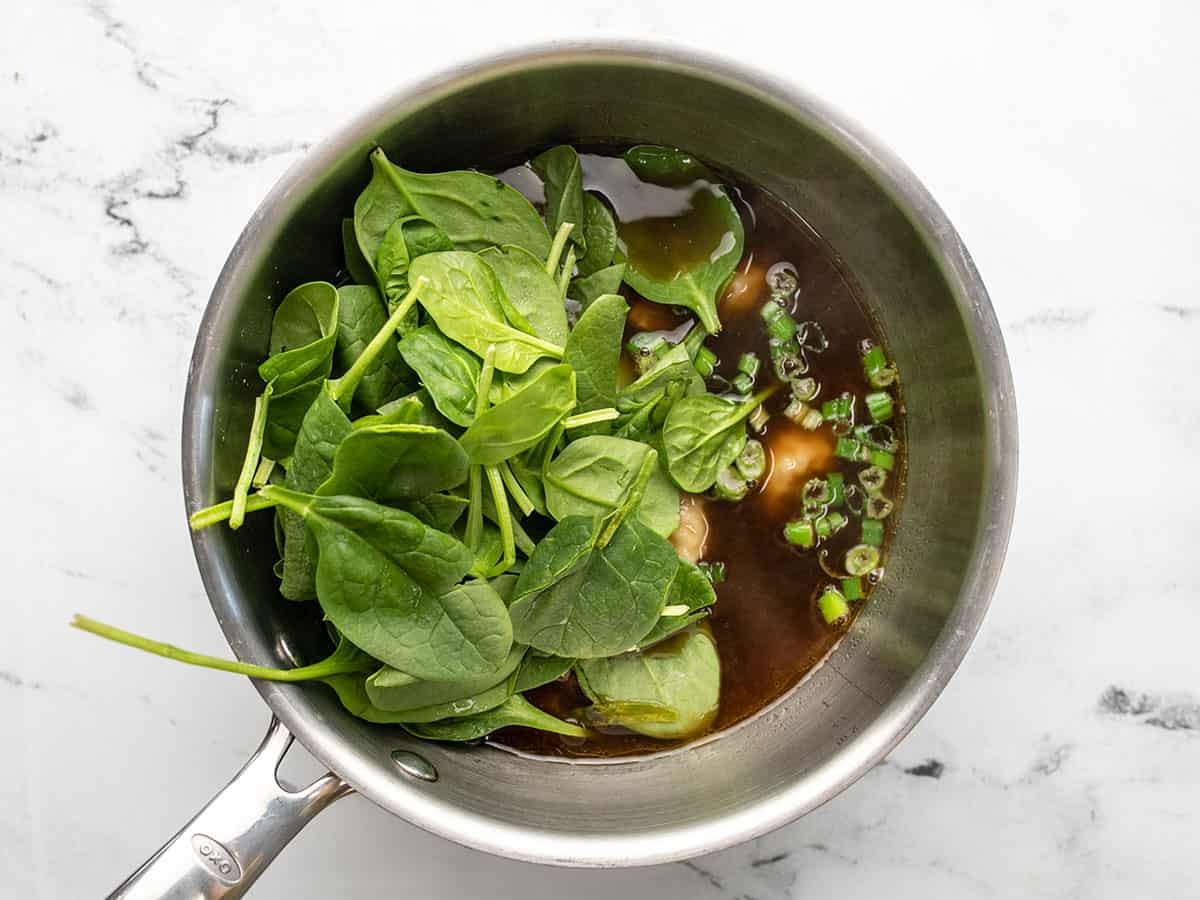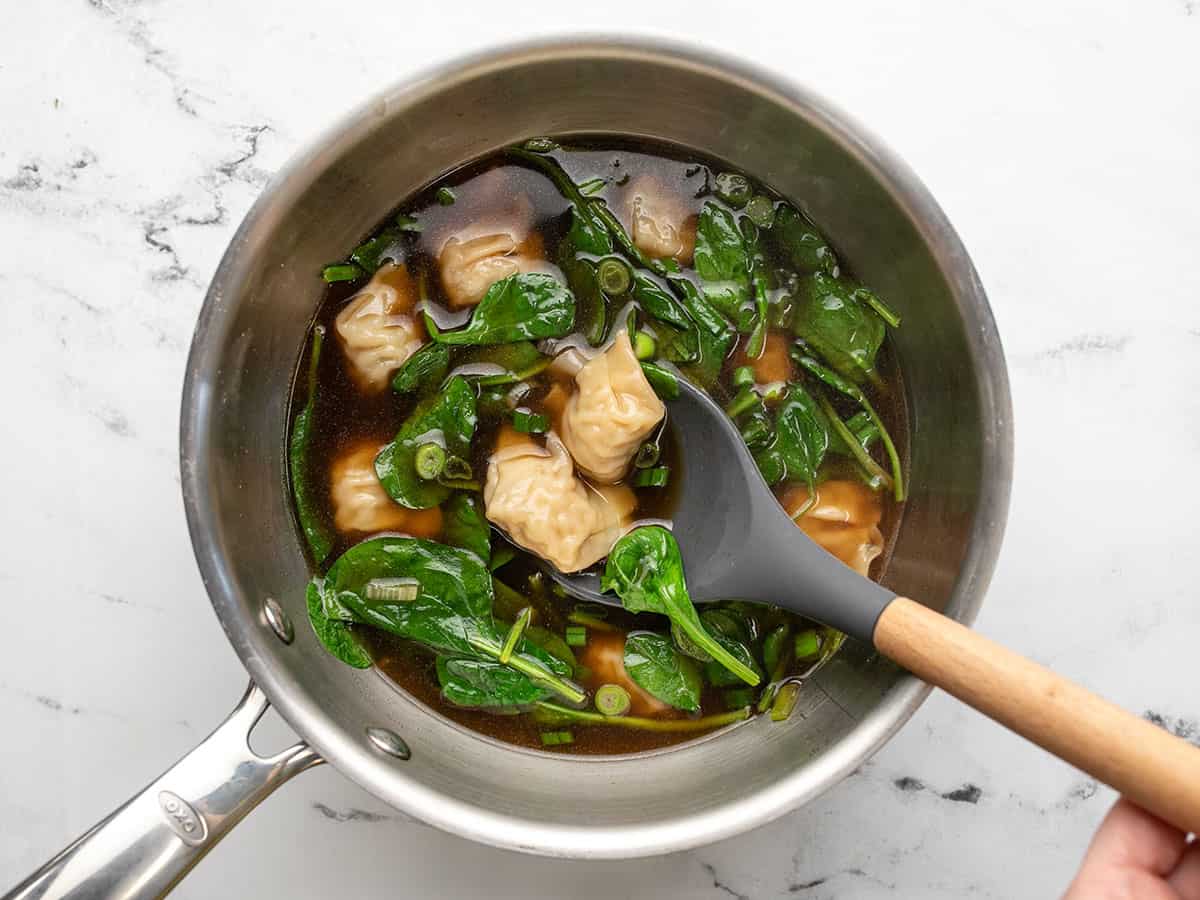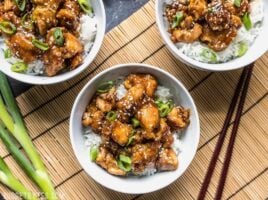When I opened my former restaurant, AVO, in Nashville, I knew this Kimchi Spring Roll appetizer would make it onto the menu. Not only did it make it onto the menu (and it’s still on the menu with a new chef at the helm and under new ownership!) but it was our best-selling item. The flavor balancing act is perfectly executed in the kimchi filling, so if you follow this recipe to a T, you will be the star at the next book club or potluck you attend, I promise!

What Are FRESH KIMCHI SPRING Rolls?
This recipe is the ultimate crowd-pleaser, whether you’re typically a fan of kimchi or not. Who doesn’t love a fresh spring roll?! The spicy, tangy, creamy filling in a soft wrapping is a great bite to share when you have company over and the filling alone makes a great healthy topping on salad in place of the same old tuna salad. The flavors and textures balance so perfectly in this one.
My original recipe uses raw cashews instead of peanuts, but subbing the peanuts totally worked; they are a great budget-friendly substitute. The sauce packs a flavor punch as well but lets the kimchi filling really shine. I hope you love this recipe as much as I do. This one’s near and dear to my little veggie-loving heart!
Ingredients
Here’s what you’ll need to make these fresh kimchi spring rolls:
- Dipping Sauce: A sweet, savory, and tangy combination of soy sauce, rice wine vinegar, sesame oil, sriracha, green onion, garlic, and fresh ginger.
- Kimchi: This gut-friendly, probiotic-packed superfood is tangy, spicy, and a little bit sour. Opt for a mild kimchi if you’re not a fan of spice.
- Peanuts: Roasted unsalted peanuts work perfectly in place of my original cashews to create a thick and creamy filling.
- Peanut Butter: Enhances the peanut flavor and helps create a creamy filling.
- Maple Syrup: Adds a touch of sweetness to balance out the spiciness and richness of the filling.
- Sesame Oil: Toasted sesame oil adds a hint of nuttiness to the filling.
- Veggies: Bell peppers, carrots, and cucumber make up the fresh and crunchy veggie filling of these spring rolls.
- Lettuce: Green leaf lettuce helps create a barrier between the saucy filling and the spring roll wrappers.
- Spring Roll Wrappers: Also called “rice paper wrappers,” these light and translucent wrappers are dry and firm until you soak them. Then, they become pliable and will stay chewy and soft.
What’s the Difference Between A SPRING ROLL, A SUMMER ROLL, and An Egg Roll?
While all these tasty bites are wrapped and rolled, spring rolls may be fresh, baked, or deep fried, where summer rolls are always served cold. An egg roll is a variation on a spring roll that is made with dough that has been enriched with eggs, typically fried. Technically, these fresh kimchi spring rolls could also called a summer roll. They are so refreshing!
Summer Roll Tips
- You don’t need to use all of the spring roll wrappers… just keep rolling until all filling ingredients are gone!
- Don’t overfill your spring rolls. Trying to pack in too much filling will surely make a mess!
- Try to make a bed with the veggies and lettuce for the kimchi filling to lay on top of so your rice paper can firm up.
- They are less likely to tear if the finished spring rolls touch if you sprinkle some sesame seeds on the sides. The rice paper remains sticky for a few minutes after rolling.
- The spring rolls don’t keep particularly well for more than a day, but any extra kimchi filling and veggies will take any salad to the next level!
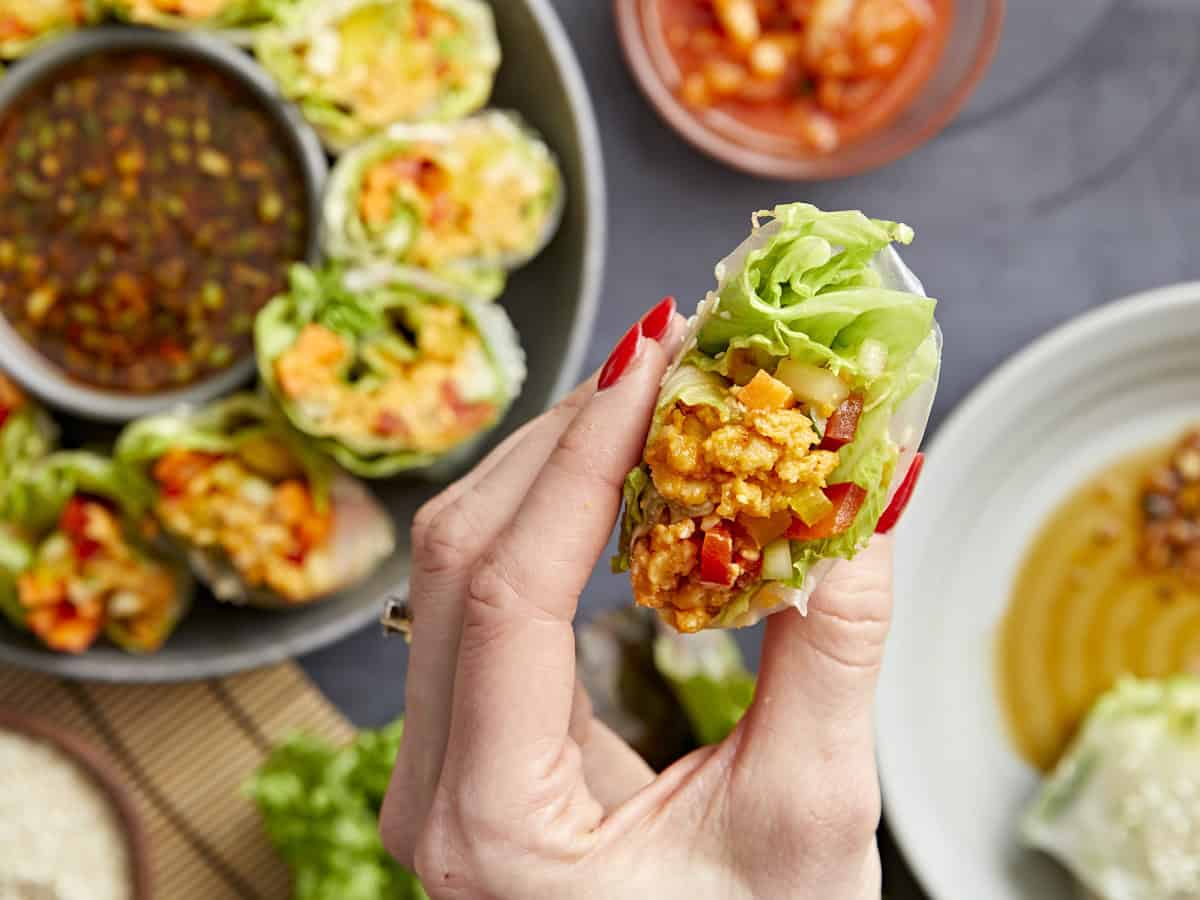

Fresh Kimchi Spring Rolls
Equipment
Ingredients
Dipping Sauce:
- 1/3 cup soy sauce $0.26
- 1/3 cup rice wine vinegar $1.44
- 1 Tbsp sesame oil $0.32
- 1 Tbsp sriracha $0.25
- 1 minced green onion $0.10
- 1 minced garlic clove $0.05
- 1 inch ginger, peeled and grated $0.15
Summer Roll Veggies + Kimchi Filling:
- 1 cup kimchi $2.99
- 1 cup roasted unsalted peanuts $1.24
- 2 Tbsp peanut butter $0.12
- 1 Tbsp maple syrup $0.31
- 2 Tbsp toasted sesame oil $0.64
- 2 bell peppers, julienned $2.96
- 2 carrots, julienned $0.18
- 1 cucumber, seeded and julienned $0.82
- 1 head green leaf lettuce, cut into 2-inch pieces $1.97
To assemble:
- 1 package spring roll rice paper wrappers $1.46
Instructions
- Combine the soy sauce, rice wine vinegar, sriracha, grated ginger, and garlic in a mixing bowl. Whisk together and stream sesame oil in very slowly while whisking to emulsify. Stir in green onions and set dipping sauce aside.
- Add kimchi, peanuts, peanut butter, maple, and toasted sesame oil to a food processor.
- Pulse until a thick, chunky, well-combined paste forms. Texture is a good thing, so don’t process it to the point of being smooth. Set aside in the fridge.
- Julienne bell peppers, carrots, cucumber, and cut green leaf lettuce into 2 inch pieces.
- Fill a shallow cookie sheet with warm water next to a clean cutting board or other suitable, clean work surface.
- Dip the edible spring roll wrapper in the shallow warm water until soft and pliable, but not overly mushy.
- Transfer to your clean work surface and carefully fill the spring roll wrapper with lettuce on the bottom, a 1-2 Tablespoon scoop of kimchi filling in the middle, a few julienned veggies and another piece of lettuce on top.**
- Gently wrap each spring roll, tucking in the sides to keep all of the filling from falling out.
- Sprinkle each spring roll with sesame seeds (optional, but they add a nice texture and help keep the finished rolls from sticking together and tearing.)
- Repeat steps 5-8 until all of your filling is used up.
- Serve fresh kimchi spring rolls cut in half with dipping sauce. Enjoy!
See how we calculate recipe costs here.
Notes
Nutrition

how to make FRESH Kimchi SPRING Rolls – step by step photos

Combine the 1/3 cup soy sauce, 1/3 cup rice wine vinegar, 1 Tbsp sriracha, 1 inch of peeled and grated ginger, and 1 minced clove of garlic in a mixing bowl. Whisk together and stream 1 Tbsp sesame oil in very slowly while whisking to emulsify. Stir in 1 minced green onion and set dipping sauce aside.

Add 1 cup kimchi, 1 cup roasted unsalted peanuts, 2 Tbsp peanut butter, 1 Tbsp maple, and 2 Tbsp toasted sesame oil to a food processor.

Pulse until a thick, chunky, well-combined paste forms. Texture is a good thing, so don’t process it to the point of being smooth. Set aside in the fridge.

Julienne 2 bell peppers, 2 carrots, 1 cucumber, and cut 1 head of green leaf lettuce into 2-inch pieces.

Fill a shallow cookie sheet with warm water next to a clean cutting board or other suitable, clean work surface. Dip the edible spring roll wrapper in the shallow warm water until soft and pliable, but not overly mushy.

Then, fill the spring roll wrapper with lettuce on the bottom, a 1-2 Tablespoon scoop of kimchi filling in the middle, a few julienned veggies and another piece of lettuce on top.*

Gently wrap each spring roll, tucking in the sides to keep all of the filling from falling out.

Sprinkle each spring roll with sesame seeds (optional, but they add a nice texture and help keep the summer rolls from sticking together and tearing.) Repeat steps 5-8 until all of your filling is used up. Serve spring rolls cut in half with dipping sauce. Enjoy!

These fresh kimchi spring rolls were a smash hit at AVO for a reason, and I’m confident this budget-friendly version will be a hit for you at home as well!
The post Fresh Kimchi Spring Rolls appeared first on Budget Bytes.
